Accessibility Dilemma in Metro Stations: An Experimental Pilot Study Based on Passengers’ Emotional Experiences
Abstract
1. Introduction
2. Literature Review
3. Methodology
3.1. Observations in Existing Metro Stations
- Context of use (conditions and situations in which the services are used, such as frequency of use or the type of users utilizing the services), with 2 questions.
- Perceived physical accessibility (ease of movement within the station, use of ramps, elevators), with 10 questions.
- Perceived safety (feelings of safety when using the facilities), with 4 questions.
- Inclusivity (accessibility and adequacy of services for people with different abilities and needs, such as ramps or adapted services), with 22 questions.
- Adaptive strategies and environmental awareness (ability to adjust behaviors and decisions based on changing environmental conditions, such as signage or flexible planning), with 4 questions.
- Intermodal connectivity (ease of transfer between modes of transport, such as buses or bicycles), with 11 questions.
- Overall satisfaction (global evaluation of the user experience at the station), with 7 questions.
- Pedestrian flows: Movements of users in areas such as ramps, elevators, stairs, and transfer points.
- Identification of barriers: Physical or signage barriers were documented, as well as areas where users experience difficulties or delays.
- Moment 1 (M1): From the Origin
- Moment 2 (M2): On the Way to the Station
- Moment 3 (M3): Arrival at the Station
- Moment 4 (M4): Waiting on the Platform
- Moment 5 (M5): Boarding the Train
- Moment 6 (M6): On the Train
- Moment 7 (M7): Leaving the Train
- Moment 8 (M8): Leaving the Station
- Moment 9 (M9): Arrival at the Destination
3.2. Experiment Set-Up
- Density: The experiments began with an empty metro car, where passengers had to enter and settle into seats. Then, more passengers board the metro car; therefore, a more crowded situation is registered.
- Layout: The seats inside the metro car were arranged in a vertical alignment to the assumed movement of the train (see Figure 3a). After boarding and alighting, the layout of the car was modified to consider a new seat arrangement, where the seats were placed parallel to the assumed movement of the train. This change created more space in the aisle of the car (see Figure 3b).
4. Results
4.1. Observations Results
- Problems with elevator accessibility:
- ⚬
- Frequency: Numerous participants reported encountering issues with the elevators at various stations. This includes malfunctioning elevator buttons, where users struggle to get the elevator to operate properly. Furthermore, some passengers must seek assistance from operators to use the elevators, leading to additional delays and frustration. This issue particularly affects individuals with mobility challenges who rely on these elevators as a primary means of accessing different levels of the station.
- ⚬
- Maintenance: A recurring concern mentioned by participants is the lack of proper maintenance of elevators. Many users described instances where elevators were out of service or did not function as intended, leading to inconvenience and, at times, forcing passengers to take alternative, less accessible routes. This problem appears to be prevalent in certain stations, such as Viña, which contributes to negative emotional responses, such as feelings of helplessness, frustration, and dissatisfaction.
- Problems with train frequency accessibility:
- ⚬
- Inconsistencies: Another prominent issue raised by users pertains to the train frequency, specifically the inconsistency between the advertised train schedules and the actual arrival times. Some passengers reported that trains did not arrive at the expected times, causing significant delays. This inconsistency leads to emotional reactions such as irritation and stress. Passengers, particularly those on tight schedules, feel frustrated when they cannot rely on the promised train schedules. These inconsistencies disrupt the smooth flow of the commuting experience, leaving passengers feeling anxious and unsettled.
- Problems with accessibility and the need for infrastructure updates:
- ⚬
- Population Growth: With the increasing number of passengers using the metro system, there is a clear indication that the infrastructure of the stations and trains needs to be updated to accommodate this growth. Many users suggest that stations and platforms are becoming overcrowded, especially during peak hours, leading to difficulties in moving around and navigating spaces. This overcrowding, coupled with the lack of available resources, such as accessible seating or ample space, often results in passengers feeling stressed, agitated, and physically uncomfortable.
- ⚬
- Safety and Communication: Users also expressed the need for improvements in safety and communication within the system. Many highlighted that there were unclear or insufficient signs, especially for people with disabilities, and that announcements or warnings regarding train delays or station changes were not always timely or effective. This lack of effective communication contributes to confusion and anxiety, particularly among vulnerable groups who may require additional guidance to navigate the system. Enhancing safety features and ensuring clear, consistent communication would not only improve users’ sense of security but also contribute to a more positive emotional experience while traveling.
4.2. Experiment Results
5. Discussion
- Distance and user-friendly design: The proximity of stations and ease of walking to them are critical aspects. Pedestrian-friendly designs, along with adequate coverage of buildings around the stations, can significantly improve accessibility for these users [38].
- Crowd evaluation: Incorporating crowd evaluation is essential to gain a more comprehensive understanding of accessibility at stations with high passenger traffic. This allows for more effective planning to ensure the mobility of vulnerable users, even during peak hours [39].
- Impact on the urban environment: The proximity of train and metro stations can improve urban accessibility but may also influence phenomena such as gentrification, which must be considered when planning inclusive stations [42].
- Resilience and vulnerability in station design: The vulnerability and resilience of train and metro stations are critical aspects that must be addressed in planning and design. Resilience to disasters is essential to ensure that stations remain safe and accessible even in emergencies, requiring continuous evaluation of stations to identify potential risks and design solutions that enhance their recovery capacity [43,44]. Evaluating the vulnerability of public transportation networks is also crucial for developing risk mitigation strategies that protect vulnerable users during crises [45].
- Safety, mobility, and intermodality: Improving pedestrian accessibility and intermodality at train and metro stations is a key goal for creating more inclusive transportation systems. Considering factors like safety on access routes and the integration of various modes of transport can increase the use of public transport among vulnerable users and improve their travel experience [46]. Developing transportation policies that encourage transfers between modes, such as bike-sharing and trains, is an effective strategy to increase public transportation usage and improve accessibility [47].
6. Conclusions
Author Contributions
Funding
Institutional Review Board Statement
Informed Consent Statement
Data Availability Statement
Conflicts of Interest
Appendix A. Questionnaire
References
- Busquets, J. Defining the Urbanistic Project–Ten Contemporary Approachs. Harv. Des. Mag. 2006, 71–73. [Google Scholar]
- López, A. El metro como infraestructura de proyecto urbano: Tres escenarios de intervención para la estación de metro Plaza Maipú. In Arquitectura; Pontificia Universidad Católica de Chile: Santiago, Spain, 2008. [Google Scholar]
- Koolhaas, R. Unkspace, Logan Airport: A World-Class Upgrade for the Twenty-first Century. October 2002, 100, 175–199. [Google Scholar]
- Sectra-Mideplan, R. Construcción de Planes Estratégicos de Desarrollo del STU del Gran Valparaıso, IV Etapa; Secretaria de Planificación de Transporte: Biblioteca, Mexico, 2003. [Google Scholar]
- Seriani, S.; Fernández, R. Planning guidelines for metro–bus interchanges by means of a pedestrian microsimulation model. Transp. Plan. Technol. 2015, 38, 569–583. [Google Scholar]
- Seriani, S.; Arce, P.; Belmar, C.; Blanche, V.; Valencia, A.; Luza, D.; Fujiyama, T. Analyzing the Effect of Yellow Safety Line Designs at the Platform Edge in Metro Stations: An Experimental Approach. Appl. Sci. 2023, 13, 4791. [Google Scholar] [CrossRef]
- Seriani, S.; Fernandez, R. Pedestrian traffic management of boarding and alighting in metro stations. Transp. Res. Part C Emerg. Technol. 2015, 53, 76–92. [Google Scholar]
- Minvu. Decreto Supremo 50. Ley Nº 20.422, Sobre Igualdad de Oportunidades e Inclusión Social de Personas con Discapacidad; Ministerio de Vivienda y Urbanismo: Santiago, Chile, 2016. [Google Scholar]
- Yang, H.; Ruan, Z.; Li, W.; Zhu, H.; Zhao, J.; Peng, J. The impact of built environment factors on elderly people’s mobility characteristics by metro system considering spatial heterogeneity. ISPRS Int. J. Geo-Inf. 2022, 11, 315. [Google Scholar] [CrossRef]
- United Nations. United Nations 2015. Available online: https://sdgs.un.org/goals (accessed on 1 January 2025).
- Xing, Y.; Lu, J.; Chen, S.; Dissanayake, S. Vulnerability analysis of urban rail transit based on complex network theory: A case study of Shanghai Metro. Public Transp. 2017, 9, 501–525. [Google Scholar]
- Jiang, R.; Lu, Q.C.; Peng, Z.R. A station-based rail transit network vulnerability measure considering land use dependency. J. Transp. Geogr. 2018, 66, 10–18. [Google Scholar]
- Cottrill, C.D.; Brooke, S.; Mulley, C.; Nelson, J.D.; Wright, S. Can multi-modal integration provide enhanced public transport service provision to address the needs of vulnerable populations? Res. Transp. Econ. 2020, 83, 100954. [Google Scholar]
- Hong, L.; Ouyang, M.; Xu, M.; Hu, P. Time-varied accessibility and vulnerability analysis of integrated metro and high-speed rail systems. Reliab. Eng. Syst. Saf. 2020, 193, 106622. [Google Scholar] [CrossRef]
- Han, Y.; Ku, J.; Kim, Y.; Hwang, J. Analyzing the accessibility of subway stations for transport-vulnerable population segments in Seoul: Case of bus-to-subway transfer. Case Stud. Transp. Policy 2022, 10, 166–174. [Google Scholar]
- Radzimski, A. Accessibility of Vulnerable Populations to Essential Opportunities: A Multimodal Approach with Application to Four Polish Cities. Netw. Spat. Econ. 2024, 1–28. [Google Scholar]
- Kazemzadeh, K.; Laureshyn, A.; Winslott Hiselius, L.; Ronchi, E. Expanding the Scope of the Bicycle Level-of-Service Concept: A Review of the Literature. Sustainability 2020, 12, 2944. [Google Scholar] [CrossRef]
- TRB. Highway Capacity Manual; Transportation Research Board; Nacional Research Council: Washington, DC, USA, 2000. [Google Scholar]
- TRB. Transit Capacity and Level of Service Manual, 2nd ed.; TCRP Report 100; Transportation Research Board: Washington, DC, USA, 2003. [Google Scholar]
- TRB. Pedestrian and Bicycle Concept; Pedestrians. In Highway Capacity Manual; Transportation Research Board: Washington, DC, USA, 2010; Chapter 11, Chapter 18. [Google Scholar]
- Fernández, R. Temas de Ingeniería y Gestión de Tránsito; RIL Editores: Santiago, Chile, 2014. [Google Scholar]
- Barría, C.; Guevara, C.A.; Jimenez-Molina, A.; Seriani, S. Relating emotions, psychophysiological indicators and context in public transport trips: Case study and a joint framework for data collection and analysis. Transp. Res. Part F Traffic Psychol. Behav. 2023, 95, 418–431. [Google Scholar] [CrossRef]
- Banister, D. The sustainable mobility paradigm. Transp. Policy 2008, 15, 73–80. [Google Scholar]
- Tyler, N. Accessibility and the Bus System: From Concepts to Practice; Thomas Telford: London, UK, 2002. [Google Scholar]
- Tyler, N. Accessibility and the Bus System: Transforming the World; ICE Publishing: London, UK, 2015. [Google Scholar]
- Rotenberg, S.; Nooruddin, I. Getting on Track: Accessibility Policy and the Design of the Mumbai Metro. J. Public Space 2022, 7, 29–40. [Google Scholar]
- Andrade, A.; Escudero, M.; Parker, J.; Bartolucci, C.; Seriani, S.; Aprigliano, V. Perceptions of people with reduced mobility regarding universal accessibility at bus stops: A pilot study in Santiago, Chile. Case Stud. Transp. Policy 2024, 16, 101190. [Google Scholar]
- Debrezion, G.; Pels, E.; Rietveld, P. The impact of railway stations on residential and commercial property value: A meta-analysis. J. Real Estate Financ. Econ. 2007, 35, 161–180. [Google Scholar]
- Tetiranont, S.; Sadakorn, W.; Rugkhapan, N.T.; Prasittisopin, L. Enhancing sustainable railway station design in tropical climates: Insights from Thailand’s architectural theses and case studies. Buildings 2024, 14, 829. [Google Scholar] [CrossRef]
- Liang, Y.; Song, W.; Dong, X. Evaluating the space use of large railway hub station areas in Beijing toward integrated station-city development. Land 2021, 10, 1267. [Google Scholar] [CrossRef]
- Isa, H.M.; Zanol, H.; Alauddin, K.; Nawi, M.H. Provisions of disabled facilities at the Malaysian public transport stations. In MATEC Web of Conferences; EDP Sciences: London, UK, 2016. [Google Scholar]
- Tamba, J. Exploring The Accessibility and Facility IN Railway Station Used by Persons with Disabilities: An Experience From Kebayoran Railway Station, Jakarta. Indones. J. Disabil. Stud. 2018, 5, 37–45. [Google Scholar]
- Stjernborg, V. Accessibility for all in public transport and the overlooked (social) dimension—A case study of Stockholm. Sustainability 2019, 11, 4902. [Google Scholar] [CrossRef]
- Borndörfer, R.; Grötschel, M.; Pfetsch, M.E. A column-generation approach to line planning in public transport. Transp. Sci. 2007, 41, 123–132. [Google Scholar] [CrossRef]
- Rodriguez Porcel, M.; Lee, S.; Sandoval, D.; Tascón Valencia, J.; Jaramillo, P.J. Auditoría Georreferenciada Y Diagnóstico de Accesibilidad Peatonal de Personas con Discapacidad en la Primera Y Última Milla de un Viaje; IADB: Washington, DC, USA, 2023. [Google Scholar]
- Arias-Badia, B. La accesibilidad en los estudios de traducción e interpretación: Experiencias docentes con estudiantes con ceguera y baja visión. Int. J. 21st Century Educ. 2023, 10, 3–14. [Google Scholar]
- Garnica-Quiroga, V. El impacto y la percepción de los usuarios acerca del servicio del TransMicable en Bogotá DC, como modo de última y primera milla. Territorios 2021, 44, 171–184. [Google Scholar]
- Paydar, M.; Fard, A.K.; Khaghani, M.M. Walking toward metro stations: The contribution of distance, attitudes, and perceived built environment. Sustainability 2020, 12, 10291. [Google Scholar] [CrossRef]
- Lin, D.; Zhang, Y.; Meng, L. Assessing bike accessibility to metro systems by integrating crowdedness. Trans. Urban Data Sci. Technol. 2023, 2, 159–177. [Google Scholar]
- Giang, V.T.T.; Vinh, T.D.; Huyen, N.T.; Nga, D.T.; Hung, N.M. Connectivity of metro station location with urban space—A study of Hanoi metro line N° 2.3. In E3S Web of Conferences; EDP Sciences: London, UK, 2023. [Google Scholar]
- Li, J.; Tang, R. Analysis of the choice behaviour towards docked and dockless shared bicycles based on user experience. Int. Rev. Spat. Plan. Sustain. Dev. 2019, 7, 143–156. [Google Scholar]
- Li, S.; Zhao, P. Restrained mobility in a high-accessible and migrant-rich area in downtown Beijing. Eur. Transp. Res. Rev. 2018, 10, 1–17. [Google Scholar] [CrossRef]
- Chen, J.; Liu, J.; Peng, Q.; Yin, Y. Resilience assessment of an urban rail transit network: A case study of Chengdu subway. Phys. A Stat. Mech. Its Appl. 2022, 586, 126517. [Google Scholar] [CrossRef]
- Jiao, L.; Zhu, Y.; Huo, X.; Wu, Y.; Zhang, Y. Resilience Assessment of Metro Stations Against Rainstorm Disaster Based on Cloud Model: A Case Study in Chongqing, China. Nat. Hazards 2022, 116, 2311–2337. [Google Scholar] [CrossRef] [PubMed]
- Qi, Q.; Meng, Y.; Zhao, X.; Liu, J. Resilience assessment of an Urban Metro Complex Network: A case study of the Zhengzhou Metro. Sustainability 2022, 14, 11555. [Google Scholar] [CrossRef]
- Bhatt, D.; Chandra, M. GIS and gravity model-based accessibility measure for Delhi metro. Iran. J. Sci. Technol. Trans. Civ. Eng. 2022, 46, 3411–3428. [Google Scholar] [CrossRef]
- Chen, B.Y.; Lam, W.H.; Sumalee, A.; Li, Q.; Li, Z.C. Vulnerability analysis for large-scale and congested road networks with demand uncertainty. Transp. Res. Part A Policy Pract. 2012, 46, 501–516. [Google Scholar] [CrossRef]
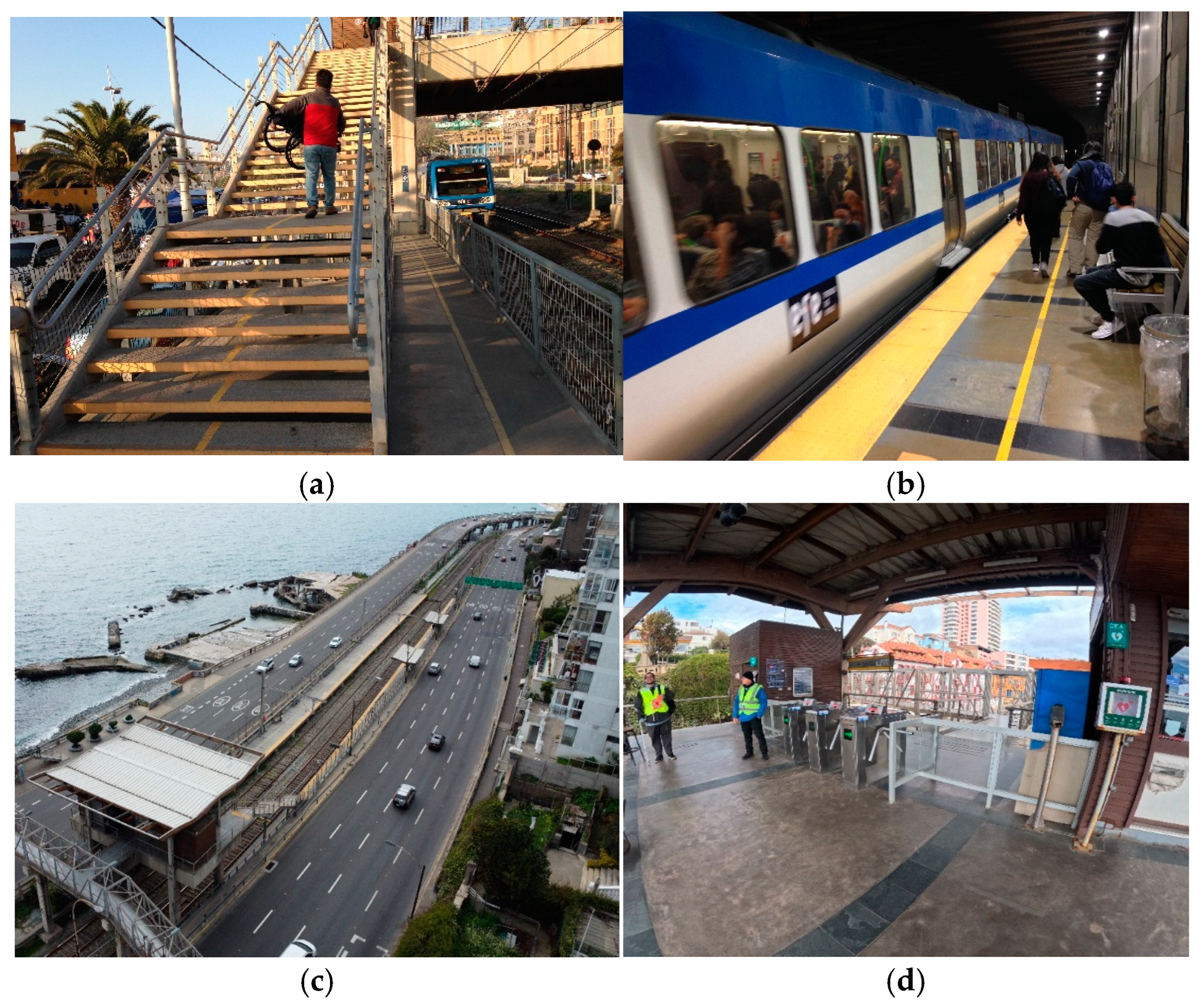
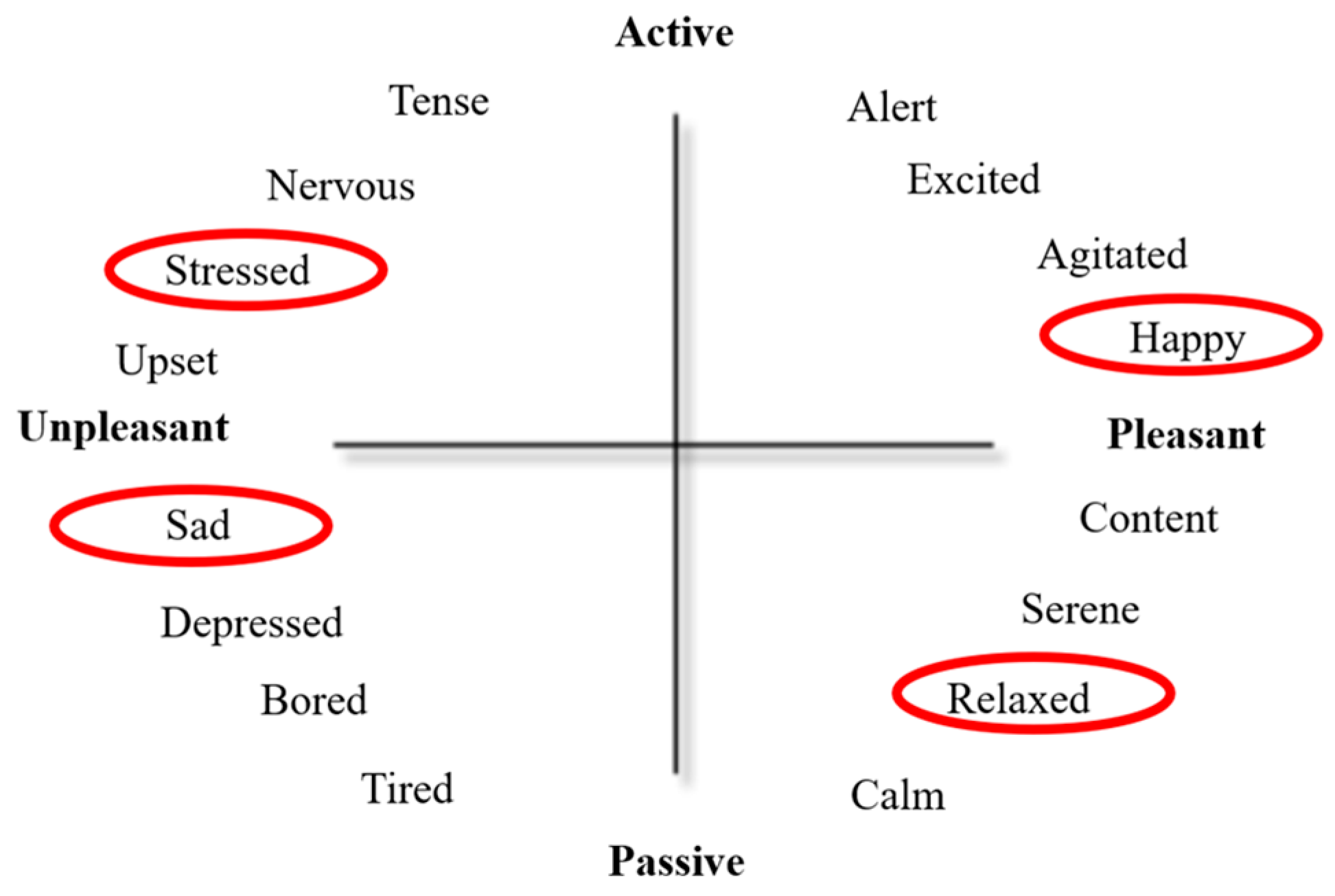
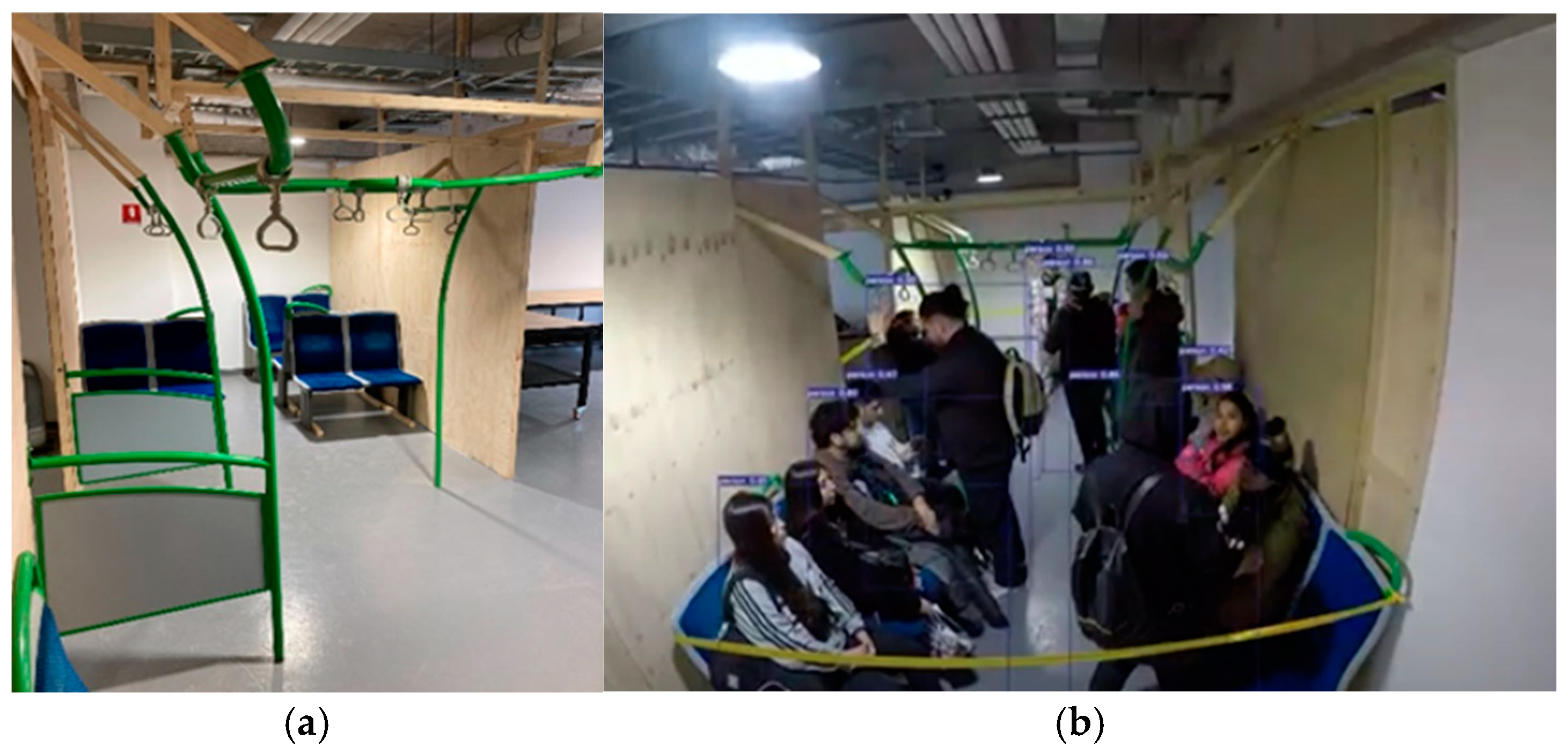


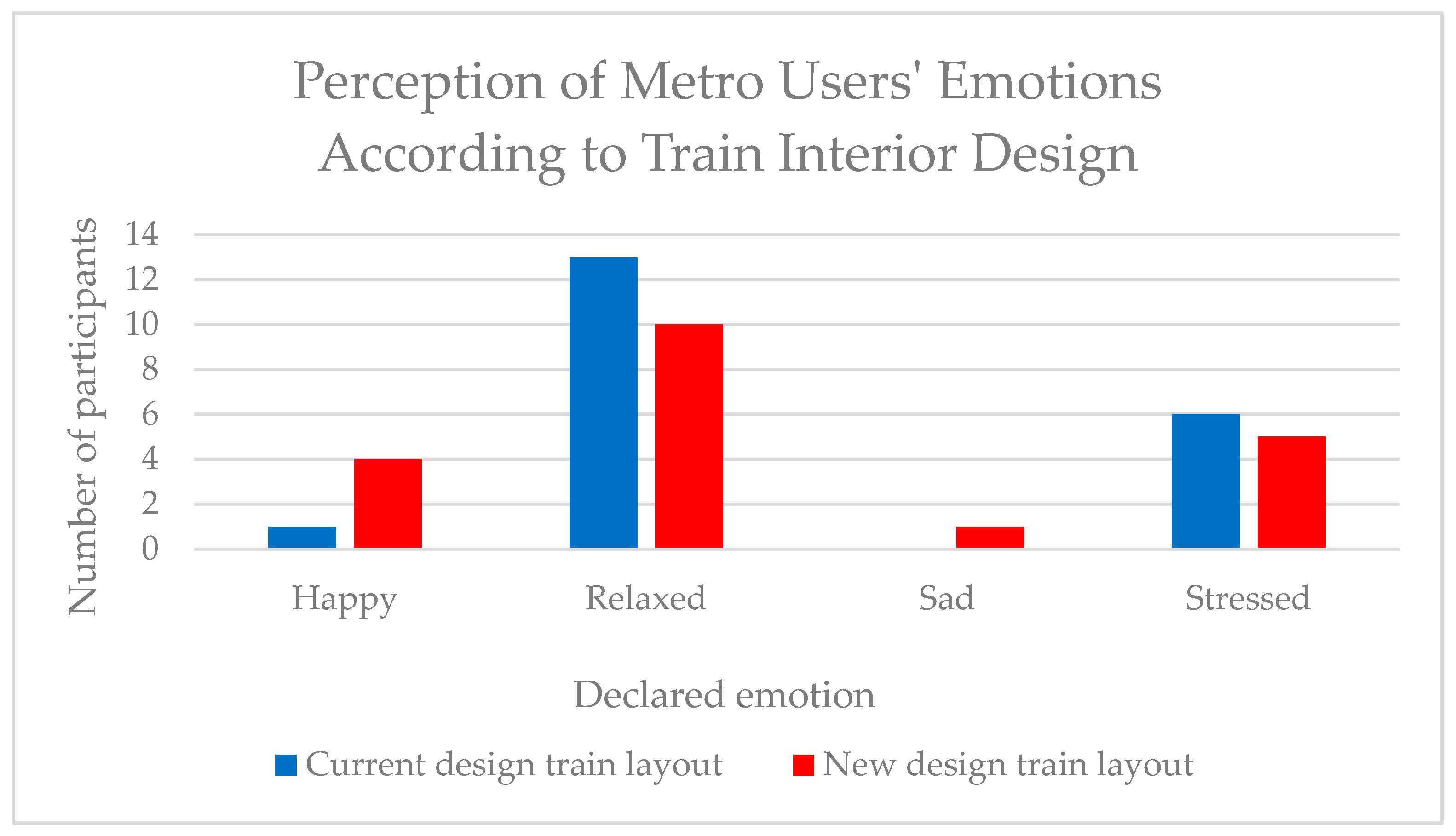
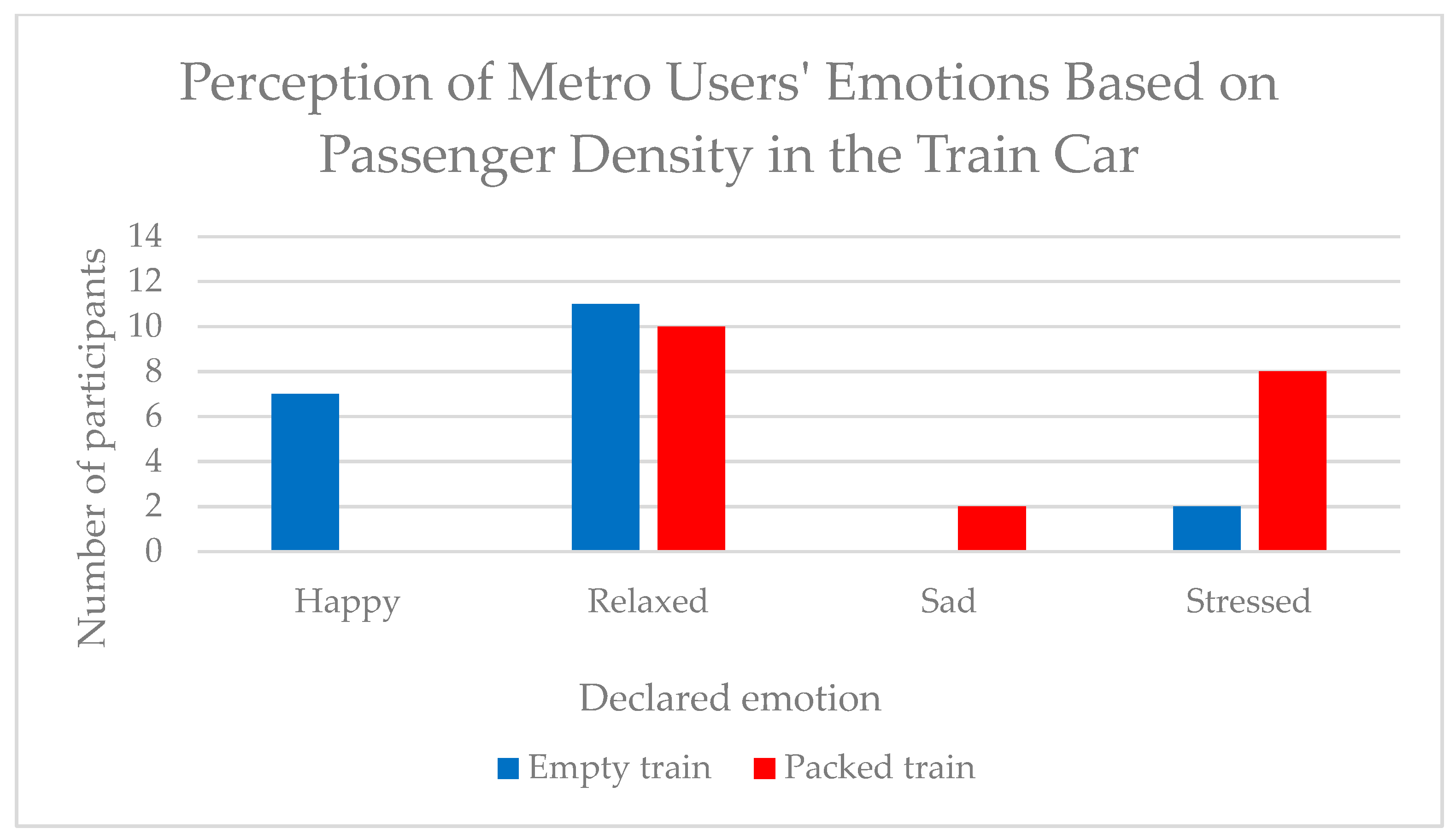
| Ranking | Ranking Value | Classification | Description |
|---|---|---|---|
| ≤n | ≤9 | Very unpleasant | Accessibility elements generate a very unpleasant overall experience for passengers |
| (n + 1) to [(5∙n − 1) − (n + 1)]/2 + (n + 1) | 10 to 27 | Unpleasant | Accessibility elements generate an unpleasant overall experience for passengers |
| [(5∙n − 1) − (n + 1)]/2 + (n + 1) + 1 to (5∙n − 1) | 28 to 44 | Pleasant | Accessibility elements generate a pleasant overall experience for passengers |
| ≥5∙n | ≥45 | Very pleasant | Accessibility elements generate a very pleasant overall experience for passengers |
| Trip Moment | Accessibility Perception Element | Very Unsatisfied or Stress | Unsatisfied or Sad | Neutral | Satisfied or Relax | Very Satisfied or Happy | Total Ranking (Using Equation (1)) | Classification Overall Experience (Using Table 1) |
|---|---|---|---|---|---|---|---|---|
| M1: From the Origin | Use of a cell phone application to plan a trip | 1 | 1 | 6 | 1 | 0 | 25 | Unpleasant |
| Subtotal M1 | 1 | 1 | 6 | 1 | 0 | |||
| M2: On the Way to the Station | Physical barriers | 0 | 1 | 3 | 5 | 0 | 31 | Pleasant |
| Safety | 0 | 1 | 2 | 5 | 1 | 33 | Pleasant | |
| Noise | 2 | 3 | 3 | 1 | 0 | 21 | Unpleasant | |
| Subtotal M2 | 2 | 5 | 8 | 11 | 1 | |||
| M3: Arrival at the Station | Signage | 0 | 0 | 2 | 5 | 2 | 36 | Pleasant |
| Waiting time at turnstiles | 1 | 3 | 2 | 3 | 0 | 25 | Unpleasant | |
| Noise | 0 | 6 | 1 | 1 | 1 | 24 | Unpleasant | |
| Subtotal M3 | 1 | 9 | 5 | 9 | 3 | |||
| M4: Waiting on the Platform | Comfort | 1 | 2 | 2 | 4 | 0 | 27 | Unpleasant |
| Shelter condition | 2 | 3 | 2 | 2 | 0 | 22 | Unpleasant | |
| Mobility facilities | 1 | 1 | 3 | 4 | 0 | 28 | Pleasant | |
| Information provided | 2 | 4 | 0 | 3 | 0 | 22 | Unpleasant | |
| Noise | 0 | 2 | 2 | 4 | 1 | 31 | Pleasant | |
| Lighting | 3 | 2 | 2 | 2 | 0 | 21 | Unpleasant | |
| Subtotal M4 | 9 | 14 | 11 | 19 | 1 | |||
| M5: Boarding the Train | Comfort | 1 | 1 | 0 | 5 | 2 | 33 | Pleasant |
| Waring sound door closing | 0 | 0 | 2 | 5 | 2 | 36 | Pleasant | |
| Time opening and closing doors | 0 | 1 | 0 | 7 | 1 | 35 | Pleasant | |
| Noise | 1 | 2 | 1 | 5 | 0 | 28 | Pleasant | |
| Subtotal M5 | 2 | 4 | 3 | 22 | 5 | |||
| M6: On the Train | Seat comfort | 0 | 1 | 0 | 8 | 0 | 34 | Pleasant |
| Noise | 1 | 0 | 0 | 5 | 3 | 36 | Pleasant | |
| Ventilation | 0 | 2 | 1 | 4 | 2 | 33 | Pleasant | |
| Train speed | 0 | 0 | 0 | 6 | 3 | 39 | Pleasant | |
| Break and acceleration of train | 0 | 1 | 0 | 8 | 0 | 34 | Pleasant | |
| Lighting | 0 | 0 | 1 | 4 | 4 | 39 | Pleasant | |
| Subtotal M6 | 1 | 4 | 2 | 35 | 12 | |||
| M7: Exiting the Train | Comfort | 2 | 1 | 0 | 6 | 0 | 28 | Pleasant |
| Information provided | 0 | 1 | 1 | 5 | 1 | 30 | Pleasant | |
| Noise | 0 | 1 | 1 | 6 | 1 | 34 | Pleasant | |
| Safety | 1 | 1 | 1 | 3 | 3 | 33 | Pleasant | |
| Subtotal M7 | 3 | 4 | 3 | 20 | 5 | |||
| M8: Leaving the Station | Signage | 1 | 1 | 0 | 6 | 1 | 32 | Pleasant |
| Safety | 1 | 1 | 0 | 6 | 1 | 32 | Pleasant | |
| Noise | 0 | 1 | 3 | 4 | 1 | 32 | Pleasant | |
| Mobility facilities | 2 | 0 | 2 | 5 | 0 | 28 | Pleasant | |
| Subtotal M8 | 4 | 3 | 5 | 21 | 3 | |||
| M9: Arrival at the Destination | Overall experience | 0 | 1 | 0 | 8 | 0 | 34 | Pleasant |
| Noise | 0 | 2 | 3 | 4 | 0 | 29 | Pleasant | |
| Signage | 0 | 0 | 2 | 6 | 1 | 35 | Pleasant | |
| Physical barriers | 2 | 3 | 1 | 2 | 1 | 24 | Unpleasant | |
| Communication | 0 | 2 | 1 | 4 | 2 | 33 | Pleasant | |
| Subtotal M9 | 2 | 8 | 7 | 24 | 4 | 25 | Unpleasant | |
| Total | 25 | 52 | 50 | 162 | 34 |
Disclaimer/Publisher’s Note: The statements, opinions and data contained in all publications are solely those of the individual author(s) and contributor(s) and not of MDPI and/or the editor(s). MDPI and/or the editor(s) disclaim responsibility for any injury to people or property resulting from any ideas, methods, instructions or products referred to in the content. |
© 2025 by the authors. Licensee MDPI, Basel, Switzerland. This article is an open access article distributed under the terms and conditions of the Creative Commons Attribution (CC BY) license (https://creativecommons.org/licenses/by/4.0/).
Share and Cite
Vega, D.; Seriani, S.; Peña, Á.; Minatogawa, V.; Aprigliano, V.; Arredondo, B.; Bastías, I.; Rodriguez-Rodriguez, F.; Muñoz, C.; Soto, R. Accessibility Dilemma in Metro Stations: An Experimental Pilot Study Based on Passengers’ Emotional Experiences. Sustainability 2025, 17, 3064. https://doi.org/10.3390/su17073064
Vega D, Seriani S, Peña Á, Minatogawa V, Aprigliano V, Arredondo B, Bastías I, Rodriguez-Rodriguez F, Muñoz C, Soto R. Accessibility Dilemma in Metro Stations: An Experimental Pilot Study Based on Passengers’ Emotional Experiences. Sustainability. 2025; 17(7):3064. https://doi.org/10.3390/su17073064
Chicago/Turabian StyleVega, Daniel, Sebastian Seriani, Álvaro Peña, Vinicius Minatogawa, Vicente Aprigliano, Bernardo Arredondo, Iván Bastías, Fernando Rodriguez-Rodriguez, Cristian Muñoz, and Rodrigo Soto. 2025. "Accessibility Dilemma in Metro Stations: An Experimental Pilot Study Based on Passengers’ Emotional Experiences" Sustainability 17, no. 7: 3064. https://doi.org/10.3390/su17073064
APA StyleVega, D., Seriani, S., Peña, Á., Minatogawa, V., Aprigliano, V., Arredondo, B., Bastías, I., Rodriguez-Rodriguez, F., Muñoz, C., & Soto, R. (2025). Accessibility Dilemma in Metro Stations: An Experimental Pilot Study Based on Passengers’ Emotional Experiences. Sustainability, 17(7), 3064. https://doi.org/10.3390/su17073064










